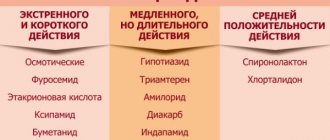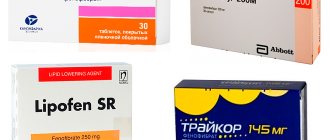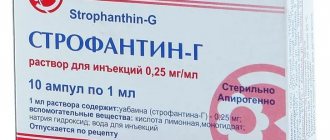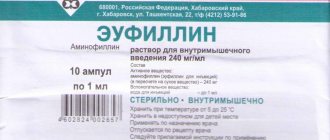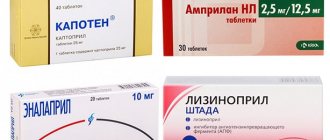Thrombolytic drugs were first used in clinical practice by S. Sherry and V. Tillet back in 1949. Already in 1959, there was evidence of the successful use of Streptokinase for the treatment of patients with myocardial infarction, but thrombolytics received general recognition only in 1989.
Unlike anticoagulants and antiplatelet drugs, the use of which helps prevent the formation of blood clots, thrombolytic agents are capable of dissolving an already formed fibrin thrombus. This effect helps restore normal blood flow in the ischemic zone of the affected organ and normalize its functioning.
This article will help you learn about the indications and contraindications for thrombolytic therapy and introduce you to the main drugs in this group. Remember that thrombolytics should be prescribed only by a doctor, and their use should be accompanied by monitoring of laboratory blood parameters and vascular condition.
Mechanism of action
The work of pharmaceuticals in this group is based on the ability to lyse (dissolve) a special substance, the so-called fibrin.
According to research, this is a protein that is always present in the blood at a certain concentration. Regardless of the patient's health condition. This is a clinical norm.
With the development of blood clots, the volume of this substance increases significantly.
Under normal conditions, fibrin concentration is balanced by the influence of another compound, plasmin. The balance is fragile, but is constantly maintained thanks to a complex signaling system.
As part of many pathological processes, the amount of protein increases, which leads to specific consequences such as the formation of a blood clot. Urgent elimination is required to avoid complications. This is where thrombolytic drugs come to the rescue.
We are talking about a heterogeneous group of medications with similar, but not identical, effects. The main mechanism for achieving the effect in all cases is based on the ability to dissolve fibrin itself, which acts as the binding basis of the clot.
Normally, with a sufficient therapeutic result, the formation is eliminated and blood flow is restored. In the future, the drug prevents repeated episodes of pathology.
However, options are possible. Many medications destroy not only fibrin, but also other substances that give the blood its rheological properties and sufficient viscosity, which can be dangerous.
Due to such an ambiguous effect, even modern medications are used with great caution within a short course to relieve an acute condition and prevent recurrent episodes. The question of choosing a specific name falls on the shoulders of the doctor. Often there is no time for long thoughts.
Main types of thrombolytics
The study of thrombolytic substances began in 1940. For almost 80 years, the list of drugs is sufficiently complete to be successfully used to treat thrombosis.
There is a classification of thrombolytics by generation:
- Systemic thrombolytics are enzymes that exist in nature. Activate any stage of fibrinolysis to resolve the blood clot. An important disadvantage is that all plasmin in the blood is stimulated, and not just in the affected part of the vessels, which can cause bleeding. The main components for first-generation drugs are of natural origin, which does not exclude the possibility of developing allergic reactions. Drugs in this group: Streptokinase, Urokinase, Streptodecase, Fibrinolysin.
- Fibrin-selective thrombolytics are the first artificially derived drugs: the necessary genetic code was introduced into E. coli using genetic engineering. These drugs only have an effect not on plasminogen, which is associated with the formed blood clot; there is no systemic effect as with 1st generation drugs. Second generation drugs: Alteplase, Actilyse.
- Third generation drugs (Reteplase, Tenecteplase) last longer and have a more precisely targeted effect - the delivery of thrombolytic substances to the blood clot improves.
- The next generation is combination drugs (Urokinase-Plasminogen). The speed of action of these substances is much greater than that of previous generations, but they also have their drawbacks: contraindications and complications from their use have not yet been sufficiently studied.
- The most modern products combine the properties of medicinal products from all previous generations and combine natural and herbal raw materials in their composition.
4th and 5th generation thrombolytics are currently undergoing clinical trials. Drugs are being developed in tablet form.
Classification
Thrombolytic drugs are classified by generation. There are three of them in total. They are fundamentally different.
Despite generally identical indications, the mechanism of influence, effectiveness, degree of safety, the range of potential patients is always different. This must be taken into account when prescribing.
| Generation | Name |
| 1 |
|
| 2 |
|
| 3 |
|
Thrombolytic drugs
Thrombolytics are drugs that are administered intravenously to prevent blood clots from blocking a blood vessel. Thrombosis can occur in the veins or arteries, impairs the functioning of the most important organs, and can cause numerous complications, as well as death.
The main purpose of taking thrombolytic drugs is to dissolve a blood clot that is interfering with normal blood circulation, or that has broken off in any part of the arteries and veins. Modern medications help even in emergency cases.
Patients often confuse thrombolytics, anticoagulants and antiplatelet agents. The first group, as already indicated, eliminates the existing blood clot, and the rest, prevent its formation, they are used for prevention.
Thrombolytics themselves are enzymes that are injected in liquid form into the affected vessels. Already an hour after administration, the medicine is active, which helps solve the problem of thrombosis as soon as possible.
Thrombolytic drugs are used only when there is a threat to life and health in a hospital setting and under the supervision of a physician.
Price Differences
The price of drugs is rising according to generation. Medicines of the latter group are extremely expensive (the same Tenecteplase, trade name Metalise, can be purchased for at least 25,000 rubles, usually the figures are even higher).
Second generation: Actilyse costs from 15,000 rubles, Purolaza from 8,500 rubles. It is considered the gold standard in terms of safety and effectiveness.
However, in medical institutions in Russia and the CIS countries they prefer to use obsolete, dangerous, but at the same time powerful names like Streptocanise (cost from 1050 rubles), Thromboflux (from 3,150 rubles) and Urokinase (from 1500 rubles)
Indications
The reasons for using medications are different. Among the key ones, which are described in the manufacturers' instructions:
- Pulmonary embolism. Blockage of the largest vessel in the pulmonary circulation. Accompanied by a serious condition of the patient. If the lumen is partially closed, there is a chance for recovery.
- A previous heart attack caused by a blood clot. Therapy is carried out immediately, because the process lasts; the more the clot closes the coronary artery, the larger the area of death.
The symptoms of a pre-infarction state are described in detail here, and the approximate consequences of a massive heart attack are here.
- A stroke, also caused by a clot. The base is identical. Only in this case, necrosis is observed not of cardiac structures, but of brain tissue and the central nervous system. Read more about the signs of a pre-stroke condition in this article.
- Thrombosis of veins and arteries. Regardless of localization. Including the lower extremities.
- Finally, drugs of this type are actively used in the treatment of clots formed inside the heart itself.
Despite the above, not all medications are equally suitable for different cases described in the indications. It is necessary to select the type based on the specific pathological process.
When using drugs from the group of thrombolytics, you need to consider several important points:
- Thrombolytics are rarely used in patients under 18 and over 75 years of age. This could be even more dangerous. The issue is resolved individually, according to indications.
- Concurrent use of anticoagulants, such as Heparin and its analogues, as well as non-steroidal anti-inflammatory drugs, increases the risk of bleeding significantly. Therefore, you need to stop using them.
- ACE inhibitors (antihypertensives) when used together increase the risks of an immune response and an allergic reaction.
The dosage is selected based on the severity of the condition, taking into account medical history (ideal option, if any). In difficult cases, when there is no time to think, you have to rely on experience.
Thrombolytics of different generations and their characteristics
Consider the list of the most well-known and frequently used drugs:
- Streptokinase is a first-generation drug, produced in the form of a powder for the preparation of a solution. The medicine is used only in hospital settings, dissolves blood clots, improves the functioning of the left heart ventricle.
Side effects include: allergies, heart rhythm disturbances, decreased blood pressure, headaches, possible internal bleeding,
- Prourokinase is a second generation thrombolytic. Contains excreted fibrin, which activates the production of plasmogen. The likelihood of hemorrhage is less than with the drugs of the previous phase. There are noticeably fewer side effects: arrhythmia or tachycardia, allergic reaction,
- Lanoteplase is a product obtained using genetic engineering. The drug is effective within 3 hours from the moment the vessel is blocked and actively destroys the blood clot. No allergies were observed with the administration of this medication; in rare cases, moderate internal bleeding was recorded.
Thrombolytic therapy helps with acute thrombosis and may even save the patient's life. The products are produced in the form of a liquid for intravenous administration, which may contain components of natural or synthetic origin. However, taking medications for blood clots on your own, selecting analogues, increasing or decreasing the dosage of prescribed drugs is strictly prohibited. These drugs have many contraindications, so the decision to treat with thrombolytics should be made by a doctor after a thorough examination, a final diagnosis and taking into account the individual characteristics of the patient.
Contraindications
The list of such is extremely wide. Many are relative in nature, that is, after resolving the issue, you can resort to the use of drugs, but most are absolute.
Sample list:
- Age under 18 or over 75 years.
- Pregnancy, breastfeeding period. All 4 cases are not always axiomatic, therefore, consideration of circumstances and factors is required. If necessary, some names can be used for these categories of patients.
- Tendency to bleeding, the presence of such in the anamnesis or at the current moment.
- Hemorrhagic stroke, real or suspected.
- Unstable course of arterial hypertension, lack of effect from the correction of tonometer readings.
- Vasculitis, phlebitis are inflammatory lesions of blood vessels of infectious or autoimmune origin.
- Childbirth, surgical interventions less than 10 days ago.
- Individual intolerance to a specific name.
- Polyvalent allergic reaction. That is, a response to many drugs. Fortunately, it is rare.
- Cardiac and renal failure in the decompensated phase.
- Hemorrhagic retinopathy, when there is a risk of hemorrhage in the retina.
- Pancreatitis, liver cirrhosis, acute diseases of the digestive tract, including gastric ulcers.
- Vascular anomalies, malformations or aneurysms.
- Tumors, benign and malignant. Prone to violating their own anatomical integrity.
- Previous hemorrhagic stroke. Pronounced extensive ischemic type of the same condition.
- Advanced phases of tuberculosis.
The list is approximate. It is described in more detail in the annotation for a specific drug.
Attention:
You need to approach the analysis carefully, because the risks are extremely high.
Thrombolytic tablets and thrombolytic agents - what are they?
Blood clots periodically form in the human body, but the body does not always cope with them on its own. This situation requires the use of special means. There is a whole class of drugs aimed at fighting blood clots. It is not difficult to understand which drugs are thrombolytics.
These are drugs that can quickly deal with blood clots and prevent the development of complications or even death. As a rule, they are administered intravenously and give good results.


